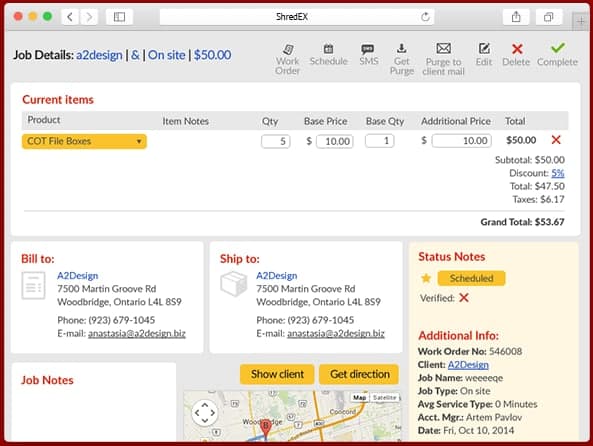Document Management System
About
The Shredex System was designed to build a paperless business automation system that helps businesses to efficiently manage and automate their business.
Consistent user experience for three different type of users: managers, clients and drivers
The system had to provide consistent user experience to the users accessing it. This presented another issue of organizing different levels of access for users and providing them with different rights
Consistent user experience for three different type of users: managers, clients and drivers
The system had to provide consistent user experience to the users accessing it. This presented another issue of organizing different levels of access for users and providing them with different rights
Large number of users
The Shredex company has become Toronto’s largest company dealing with the paper waste. It was a challenge to build a web app that encompassed already big and growing needs of the company. The clientele database alone has reached almost one hundred thousand.
Consistent user experience for three different type of users: managers, clients and drivers
The system had to provide consistent user experience to the users accessing it. This presented another issue of organizing different levels of access for users and providing them with different rights
Large number of users
The Shredex company has become Toronto’s largest company dealing with the paper waste. It was a challenge to build a web app that encompassed already big and growing needs of the company. The clientele database alone has reached almost one hundred thousand.
Efficient content management
Because of the large number of users and the information stored in the database, the dynamic information had to be efficiently processed and quickly reached without any delays.
High levels of security
Clients provide their private information, including credit cards information. The application held private information (including credit cards) and we, at A2 Design, had to ensure that abuse was prevented and private information was safe.
Real-time updates and synchronization
Web application had to have onthefly capability of creation of new clients and orders, while all the changes to the previous information as well as new one had to be stored in the cachememory (locally) if there was no connection to the Internet. And once the application gets online, all the changes should be enabled to synchronize with the main database.






